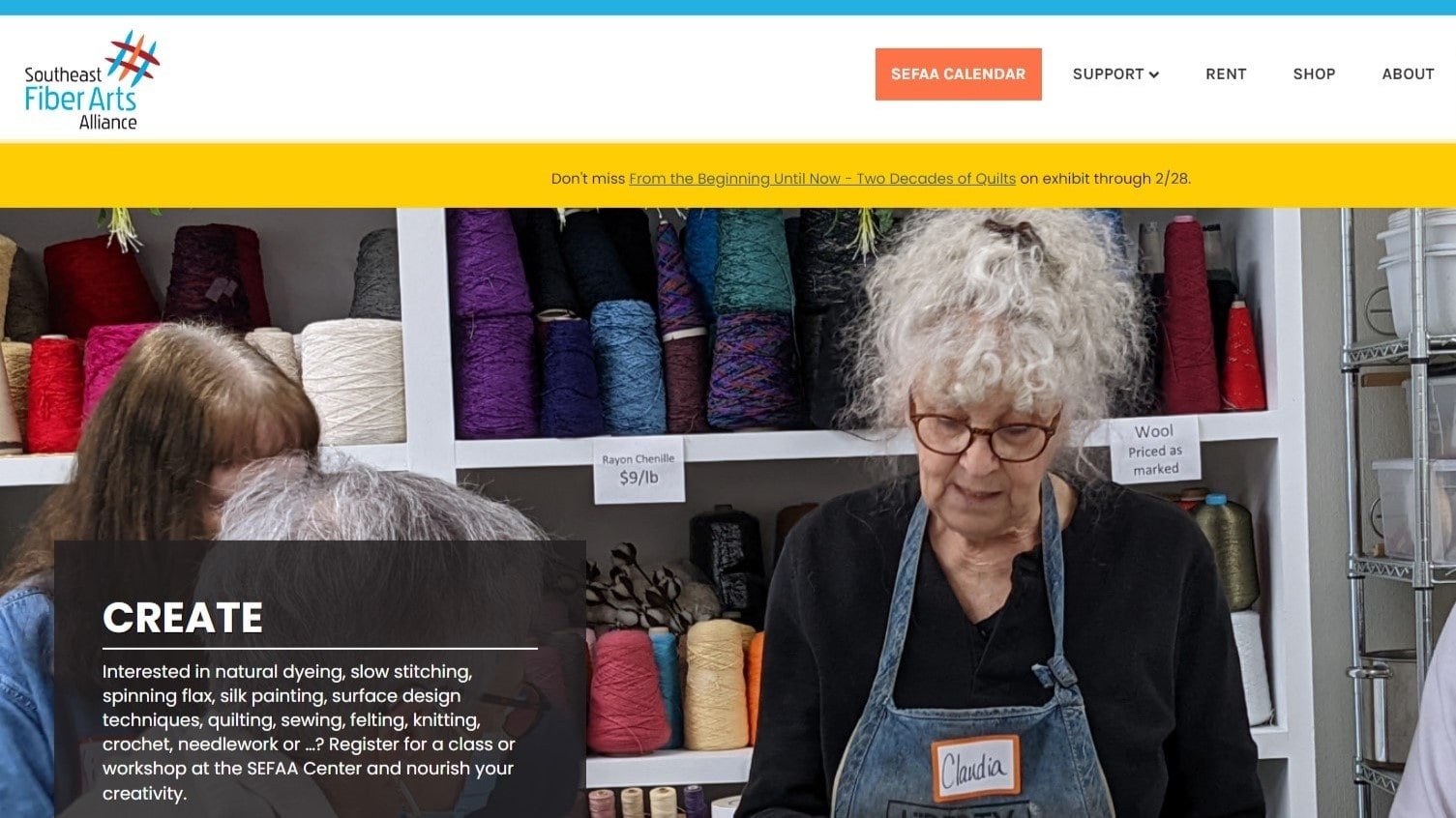
Whether your nonprofit is big or small, old or new, urban or rural, you have to have a good website. In the year 2024, it’s simply not negotiable. And you can’t build a great nonprofit website without a great nonprofit website builder—or, if you can, it’d be a huge hassle and you’re stretched thin as it is.
Don’t worry! We’re here to help. In this article, we’re going to break down 10 of the top website builders for nonprofits currently available and lay out a “shopping list” of features that you should look for when researching a new website solution.
If you’re in a hurry and you want to skip down to the list of website builders, just click the name of the builder you want check out.
All right, let’s get to it!
What Are Nonprofit Website Builders?
There are some people out there who can code websites from scratch. For the rest of us, these people might as well be wizards. We need special tools to do a lot of the heavy code-lifting for us.
That’s where website builders come in. Website builders are software platforms that allow users to create and manage websites without needing to write code. They provide a user-friendly interface with simple editing tools and pre-designed templates.
For nonprofit organizations, some website builders offer specific features tailored to their unique needs like donation processing, event registration, volunteer sign-up, members-only pages, and more.
With other builders, a nonprofit might have to adapt features designed for traditional for-profit businesses. Many of those website builders offer a ton of e-commerce features, which most nonprofits don’t have a ton of use for.
A Nonprofit Website Builder Shopping List
Finding the right nonprofit website builder for your organization means striking the right balance between features, ease of use, and cost.
One system might be affordable but a nightmare to use, while another is a bit outside your budget but comes with the perfect templates and a seamless user experience. You have to find the platform that fits your needs best—not perfectly, but “best.”
Here’s a list that tallies up the factors and features you should be shopping for in a nonprofit website builder. You aren’t going to find a solution that checks every single box, but you can probably find one that checks enough of the right ones.
Ease of Use and User Interface
- Intuitive Design Interface: Seek platforms that prioritize user-friendly interfaces with drag-and-drop functionality and easy-to-understand editing tools.
- Accessibility and Navigation: Opt for builders that emphasize intuitive navigation and accessibility features, ensuring that users, including those with disabilities, can easily interact with and navigate the website.
- Educational Resources: Prioritize builders that provide extensive educational resources, including knowledge bases, video tutorials, webinars, and community forums. These resources empower you nonprofits to learn, troubleshoot, and manage your their website effectively.
Cost and Pricing Models
- Transparent Pricing Structures: Prioritize platforms that offer clear and transparent pricing tiers, detailing the features included in each plan.
- Value for Investment: Consider the long-term value of the chosen plan. Look for Builders that are consistently making updates to their product and releasing new features, as those are the platforms that will continue to provide value in the future.
- Hidden Costs Evaluation: Carefully assess additional costs that might not be apparent initially, such as domain name fees, add-ons, or transaction fees for donations.
Customization and Design Options
- Nonprofit-Specific Templates: Look for builders with templates designed specifically for nonprofits, otherwise you’ll have to adapt and edit templates designed for for-profit businesses.
- Design Flexibility: Choose builders offering a diverse range of templates, customizable themes, and design elements.
- Mobile Responsiveness: A mobile-friendly website is crucial in today’s digital landscape, ensuring an optimal user experience across various devices, including smartphones and tablets.
- Content Management Systems (CMS): Consider builders that offer robust content management systems, allowing easy updates, additions, and modifications to website content without technical complexities.
Integrations with Fundraising and Donation Tools
- Payment Gateway Compatibility: Opt for builders that seamlessly integrate with multiple payment gateways, ensuring secure and convenient donation processing for supporters.
- Third-Party Integrations: Consider builders that offer integrations with third-party fundraising and CRM tools. This flexibility allows nonprofits to leverage additional functionalities and services seamlessly.
SEO and Online Visibility
- SEO Tools: Prioritize platforms that offer built-in SEO tools, including meta tags, keyword optimization, and sitemap generation. Effective SEO features enhance online visibility, improving search engine rankings.
- Performance Optimization: Choose builders that emphasize website performance optimization, including fast loading times, image optimization, and mobile-friendly designs.
- Personalization Tools: These features allow you to give users an experience that’s customized to their location, time of visit, or history with your website.
- Analytics and Insights: Consider platforms that offer analytics and insights into website performance.
Top Nonprofit Website Builders in 2024
It’s 2024. Every nonprofit needs a website. And, if we’re being honest, a lot of nonprofits out there could really use a better one. But which website builder should you choose?
While we can’t tell you exactly which website builder would be best for you and your nonprofit—and we would love to—we hope that this list of 10 top options currently available will help you make your decision.
1. Neon Websites
Neon Websites is a website builder that’s designed specifically for the needs of modern nonprofits. As a port of the Neon One ecosystem, Neon Websites offers a cutting edge, user-friendly experience for nonprofits and donors alike.
For Neon CRM users, Neon Websites also integrates seamlessly with the all-in-one donor management platform to create a truly unparalleled technology experience.
Look, check our URL. When it comes to Neon Websites, we’re obviously a little biased. But when it comes to nonprofit website builders, we think this platform really stack up there with the best of them.
To that end, let’s break down Neon Websites’ features, price, strengths, and weaknesses to help you decide whether it’s the right solution for your nonprofit.
Features
Neon Websites is a website builder that was designed solely for use by nonprofits. To that end, the system sports a ton of nonprofit-specific features to help you and your organization maximize your online footprint.
Some of the key features that Neon Websites offers include:
- Drag-and-drop visual editor
- Mission-specific nonprofit templates
- Site maintenance included
- Free image library
- Personalization tools
- Neon CRM integration
- Marketing and social media integrations
- SEO tools
- Web analytics
Strengths & Weaknesses
Price
Neon Websites costs $49/mo across all our different packages. The only difference between them is the set-up fee that covers the work of our in-house design team.
DIY: No set-up fee
With this package, you take advantage of all the tools available through Neon Websites to build your new website.
Standard Build: $600 set-up fee
In the Standard package, you pick a template from our library and then Neon Websites’ designers creates 6 of your website’s most important pages.
Premium Build: $1,000 set-up fee
With a Premium Build, Neon Websites’ designers work with your team to create a fully custom website template, which they then use to create your site’s 6 key pages.
You can learn more about Neon Websites’ pricing by downloading our pricing guide:
Down Neon Websites’ Pricing Guide
Summary
Neon Websites offers something for nonprofits of all sizes.
Small organizations can use the DIY package to create modern, dynamic websites, while medium-sized and large orgs can take advantage of the Standard and Premium Builds to make a site that fits their exact needs. And, for Neon CRM users, the value provided by Neon Websites is even greater!
When it comes to delivering more digital bang for your nonprofit’s buck, Neon Websites is the way to go. Learn more about Neon Websites by joining a group demo today!
2. Wix
Wix is a popular and well-established website builder known for its user-friendly interface and drag-and-drop functionality. But is it the right choice for your nonprofit? Let’s take a closer look.
Features
While Wix doesn’t offer many nonprofit-specific features, it does offer a few, plus several other functionalities that can cater to nonprofit needs.
Here are some notable ones:
- Nonprofit-specific templates
- Volunteer sign-up forms
- Online form builder
- Event management tools
- Member login and registration
- Email marketing
- SEO tools
- Free hosting
- Live chat feature
- Web analytics
- Google Calendar sync
Strengths & Weaknesses
Price
While Wix doesn’t offer specific plans exclusively for nonprofits, they do offer a 70% discount on the two-year premium plans for eligible non-profits through their partnership with TechSoup.
The cost for Wix’s premium plans is as follows:
- Light: $16/mo
- Core: $27/mo
- Business: $32/mo
- Business Elite: $159/mo
- Enterprise: Custom Pricing
Wiz also offers a limited free plan, but it comes with few features and a giant Wix logo on all your web pages.
Summary
Wix is a decent option for early-stage nonprofits that are looking for a user-friendly and affordable website builder. But it’s important to be aware of Wix’s limitations before you make a decision.
If you need a website with a lot of customization, or if you need access to nonprofit-specific features, you may want to consider another website builder.
3. Squarespace
Squarespace, a modern company beloved by the podcast set, is a popular website builder known for its sleek design and intuitive interface. Let’s dive in and see how Squarespace might (or might not) be the right website solution for you.
Features
While not offering many dedicated nonprofit-specific features, Squarespace provides a bunch of functionalities that are readily adaptable to your organization’s needs. Some of the highlights include:
- Nonprofit templates
- Donation blocks
- Memberships
- Appointment scheduling
- Email marketing
- SEO tools
Strengths & Weaknesses
Price
Squarespace offers a 10% discount on its annual plans for eligible nonprofits. Here are the prices for their three business-related plans:
- Business: $23/mo
- Commerce (Basic): 27/mo
- Commerce (Pro): $49/mo
Summary
Squarespace can be a great solution for nonprofits seeking a user-friendly platform and who aren’t focusing a ton of their fundraising efforts towards their website. If your nonprofit isn’t very interested in customizing your site experience, then take advantage of Squarespace’s sleek, visually appealing templates.
However, if extensive customization or online fundraising is crucial for your nonprofit, exploring other platforms might be beneficial.
4. WordPress
WordPress, the world’s most popular content management system (at least according to them), offers unmatched flexibility and control to nonprofits. But the price of that flexibility control comes at the cost of a steep learning curve.
How steep? Let’s read on.
Features
WordPress offers your basic stew of website features, including email and social media marketing, SEO, blogging, and pre-built templates (which they call “themes”). One thing you won’t notice in there is the “drag and drop” builder mentioned for pretty much all the other entrants on this list.
No, with WordPress, you’re going to have to do a lot more custom building and design work to construct your site. And in order to expand what your website can do, you’ll need to install “Plugins” or outside integrations. To accept donations, for instance, you’ll probably want to install the Give WP plugin.
All this adds up to a site that is low on native features but has the potential to do pretty much anything—so long as you have the expertise and the patience to build it.
Strengths & Weaknesses
Price
WordPress business plans are priced like so:
- Business: $25/mo
- Commerce: 45/mo
- Enterprise: Custom pricing
If you decide to use the Give WP plugin, the cost for that system is:
- Free: $0/year
- Basic: $149/year
- Plus: $349/year
- Pro: $499/year for their Free tier
Summary:
WordPress is going to be best for larger nonprofits that can assign a dedicated, experienced staff member to serve as admin for the site. If you are a small or medium-sized nonprofit without much technical expertise on staff, WordPress is not the solution for you.
5. Weebly
Weebly is another popular website builder that offers easy to build, “code free” sites. So what can Weebly offer your nonprofit? Let’s find out!
Features
As a solution that’s designed primarily for beginners, Weebly doesn’t offer a ton of built-in features. Here’s what it does have that might be useful for nonprofits
- Templates
- Forms
- SEO tools
- Mobile app
- e-Commerce
- Web analytics
- Third-party integrations
Strengths & Weaknesses
Price
Weebly offers a free plan with limited features. Their paid business plans are priced as below:
- Professional: $12/mo
- Performance: $26/mo
Summary
Weebly is a user-friendly and affordable website builder perfect for beginners or organizations seeking a simple (okay, a very simple) website solution. That having been said, its extremely limited customization options and features mean that any organization looking for something beyond the very basics should probably look elsewhere.
6. WildApricot
WildApricot is a membership management software solution that also offers a website builder as a part of its all-in-one package for nonprofits.
To be clear, your nonprofit would need to purchase WildApricot’s member management software in order to gain access to its website builder; it’s not a platform that you could access a la carte.
For nonprofits who are looking to create a new website on top of a new membership management solution, let’s take a look at how Wild Apricot’s website builder stacks up.
Features:
WildApricot’s website builder offers a streamlined website solution for nonprofits and associations. Here are some of that solution’s core features:
- Nonprofit-specific templates
- Drag-and-drop website builder
- Free web hosting on AWS
- Members-only pages
- Members-only forums
- SEO tools
- Online payments
- Event management
- Web analytics
It’s important to note that this website product is designed to serve as a single node in the WildApricot ecosystem.
While the website doesn’t offer any email marketing tools, for example, it’s because that capability is already covered by the membership management platform.
One of this website builder’s biggest selling points, in fact, is its integration with WildApricot’s member management system.
Strengths & Weaknesses
Price
WildApricot offers a variety of membership management plans based on the number of contacts you manage.
Here’s a cost breakdown:
- 100 contacts: $60/mo
- 250 contacts: $75/mo
- 500 contacts: $140/mo
- 2,000 contacts: $240/mo
- 5,000 contacts: $440/mo
- 15,000 contacts: $530/mo
- 50,000 contacts: $900/mo
Summary
It’s a little difficult to make an apples-to-apples comparison between WildApricot and most of the other solutions on this list, because WildApricot is primarily offering member management software with a website builder added on top.
That having been said, member-based organizations who are in the market for a new database should certainly give WildApricot and their website builder a look.
As far as web solutions go, WildApricot’s doesn’t come with a ton of built-in features or outside integrations. That makes their website tool a better fit for smaller organizations and/or membership associations with a more limited focus.
For larger or more mature organizations with more technical expertise on hand (or the resources to purchase some), WildApricot does also offer custom coding capabilities.
But, at a certain point, why not just find a website and membership management package like Neon CRM for Associations + Neon Websites, that lets you do more right out of the box?
7. GoDaddy
GoDaddy is best known as one of the original website hosting companies (and also for their numerous, often obnoxious ad campaigns over the past couple decades), but they also offer a website builder product that you can use to create your own site.
Being a relative gray hair in the website space comes with its own advantages and disadvantages. Let’s get into it!
Features
GoDaddy offers the kind of wide variety of features that you would expect from one of the oldest players in the space. Some of their features that would best speak to the needs of nonprofits include:
- Members-only pages
- Customizable templates
- Drag-and-drop builder
- Web hosting services (duh)
- Email marketing
- Payment features
- Sync with Facebook and Instagram
- Class and event scheduler
- Two-way calendar syncing
- Expansive e-commerce features
- Web analytics features
- SEO tools
Strengths & Weaknesses
Price
GoDaddy Websites offers a free plan with limited features.
The pricing for paid plans starts at:
- Basic: $9.99
- Premium: $14.99
- Commerce: $20.99
Nonprofits are eligible for a discount on all paid plans, but there isn’t a ton of information on GoDaddy’s site about it.
Summary
GoDaddy Website is a user-friendly and affordable website builder ideal for small or early nonprofits seeking a simple solution. However, its limited features—especially when it comes to processing online donations—make it a less suitable solution for medium-sized or larger organizations.
8. Site123
Site123 is a website builder designed for beginners with the goal of helping customers build a site quickly and with minimum fuss or required expertise.
Would Site123 work as a website builder for your nonprofit? Let’s have a look.
Features
Site123 offers a user-friendly website builder but it doesn’t offer many features tailored for nonprofits. Here are some of its standard features that could be adapted for your nonprofit’s needs::
- Drag-and-drop interface
- Charity website templates
- Custom form builder
- Email marketing
- SEO tools
- Free image and icon library
- Events management
- Scheduling tools
- Third party plugins
- e-Commerce
Strengths & Weaknesses
Price
Site123 offers a free plan with limited features and a paid plan that costs $12.80 per month. They do not currently offer a discount for nonprofits.
Summary
Site123 is a user-friendly and affordable website builder ideal for small to medium-sized organizations that need a simple solution. However, its limited design flexibility and lack of integrations might not be sufficient for organizations with complex needs and technology stacks.
9. Wired Impact
Wired Impact is a dedicated website platform designed specifically for nonprofits. It offers a lot more than your typical general-purpose website builder but with a higher price tag.
The company’s platform is built on top of WordPress, which is a powerful but endlessly complex system. Think of Wired Impact like a version of WordPress that’s been curated and upgraded so that it specifically addresses the needs of nonprofit organizations.
Let’s have a look at what Wired Impact and what it costs so that you can determine whether it’s the right solution for your nonprofit.
Features
Since Wired Impact’s website builder is designed for nonprofits, it comes with a range of features that address nonprofit-specific needs. Here’s a partial list of what they offer:To that end, it comes with a range of Here are some key highlights:
- Easy-to-use interface
- Online donation system
- Event management
- Volunteer management
- Form builder
- Resource library system
- Third party integrations
- SEO tools
- Web analytics
Strengths & Weaknesses
Price
Wired Impact offers several pricing plans based on the features you need:
- Core: $69/mo
- Grow: $179/mo
- Amplify: $329/mo
As Wired Impact’s business serves nonprofits, they do not offer a nonprofit-specific discount.
Summary
Wired Impact is a powerful and comprehensive website platform with tools that nonprofits can use to manage online donations, events, volunteers, and educational resources.
You should double check whether your donor management software currently offers an integration with Wired Impact, as that could impact the system’s usefulness.
But the real deciding factor with Wired Impact for most organizations will probably be cost. The system delivers a lot, but the monthly cost is much higher than many other website platforms.
Can your nonprofit swing that price tag?
10. Jimdo
Jimdo offers a user-friendly, streamlined website builder that’s designed to help small business owners create a beautiful website quickly and easily.
While Jimbo doesn’t have many nonprofit-specific offerings, let’s see how it might fit with your nonprofit’s website needs.
Features
Jimdo’s features are designed with independent small businesses in mind, but here are some key features that your nonprofit could tailor to fit its needs:
- Drag-and-drop interface
- Free image library
- Logo creator
- Business listings
- Legal text generator
- SEO tools
- e-Commerce
Strengths & Weaknesses
Price
Jimdo offers a free plan with limited features, and it offers one paid business plan for $14 per month. There are no nonprofit discounts at this time.
For an additional $4 a month, Jimdo also offers “Business Listings,” which help supporters find you across online search and social media platforms.
Summary
Jimdo is a user-friendly and affordable website, but one that’s designed for small for-profit businesses. Their focus on e-commerce and running an online store reflect that. While Jimdo could possibly be a good fit for certain early-stage nonprofits, your organization would likely outgrow its capabilities faster than it would most other website platforms.
Further Reading: How to Build a Nonprofit Website
Once you’ve settled on a website builder for your nonprofit’s new website, everything’s just smooth sailing from there, right? The hard part’s totally over? Right?
Nope. Your work is just beginning. Now it’s time to figure out your site’s new look and structure, create content for every single web page, source images, write copy, design everything, come up with an SEO strategy—it’s a lot!
Luckily, we’ve got something you can use as a guide along the way. Check out this comprehensive guide to building and managing a nonprofit website that covers every single step of the process.
Take Our Website Assessment Quiz
Finding the right nonprofit website builder might only be the first step on the journey to upgrade your site, but that means it’s also one of the most important. We hope this article has provided some helpful guidance for you as you navigate the search for a new platform.
Not sure whether your nonprofit’s website is due for an upgrade yet? Take this short, easy quiz and find out! Once you’re done, you can download our handy Website Optimization Action Plan to guide you step-by-step through your website overhaul.
Join the discussion in our Slack channel on connected fundraising






